Assembly and Usage¶
Connecting to your EVK¶
The pin 1 of EXT3-1 board aligns with the 1st pin (black wire) of bridging cable.\ The pin 10 of EXT3-1 board aligns with the 10th pin (white wire) of bridging cable.\ The pin 11 and 12 can be connected with the 1-pin cable for larger size of EPD or extra flash population is needed.

Wiring to Arduino Zero¶
The diagram shows the complete pin map connecting with colored code of 10 + 2 pins of bridging cable for most of the Arduino board.
The pin 10 (FCSS, Flash Chip Select Slave) is for the second non-populated SOIC-8 pads for additional memory and the pin 9 (ECSS, EPD Chip Select Slave) is for 9.7” or 12” EPD if you have connected with Connector board.
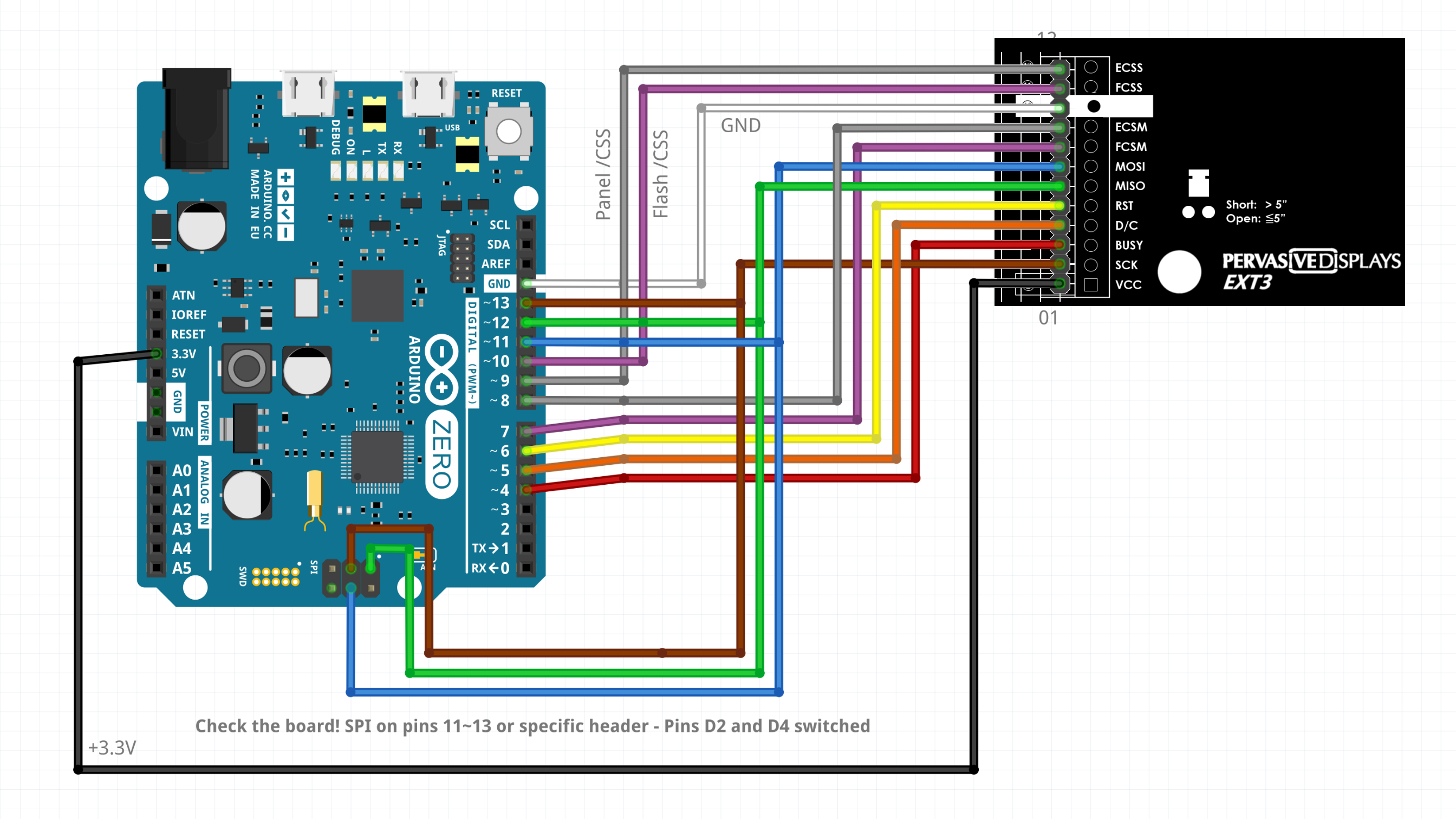
Wiring to Raspberry Pico¶
The diagram shows the complete pin map connecting with colored code of 10 + 2 pins of bridging cable for Raspberry Pi Pico (RP2040).
The pin 11 (FCSS, Flash Chip Select Slave) is for the second non-populated SOIC-8 pads for additional memory and the pin 12 (ECSS, EPD Chip Select Slave) is for 9.7” or 12” EPD if you have connected with Connector board.
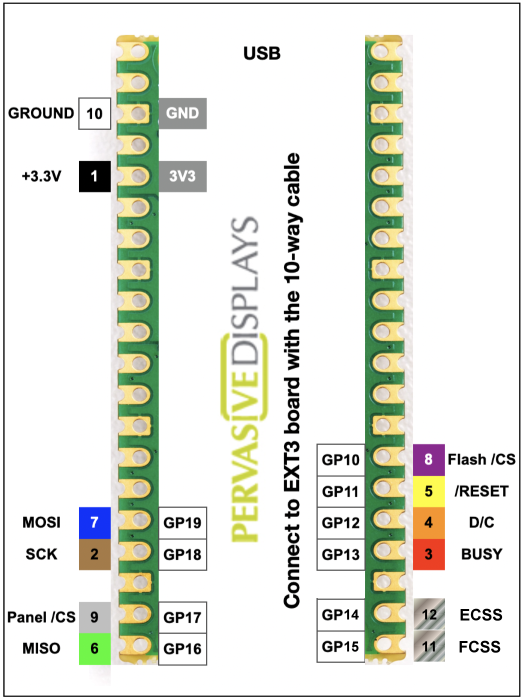
Wiring to TI LaunchPad¶
The diagram shows the complete pin map connecting with colored code of 10 + 2 pins of bridging cable for most of the LaunchPad. If your LaunchPad has 40 pins, please use the outer two rows.
The pin 11 (FCSS, Flash Chip Select Slave) is for the second non-populated SOIC-8 pads for additional memory and the pin 12 (ECSS, EPD Chip Select Slave) is for 9.7” or 12” EPD if you have connected with Connector board.
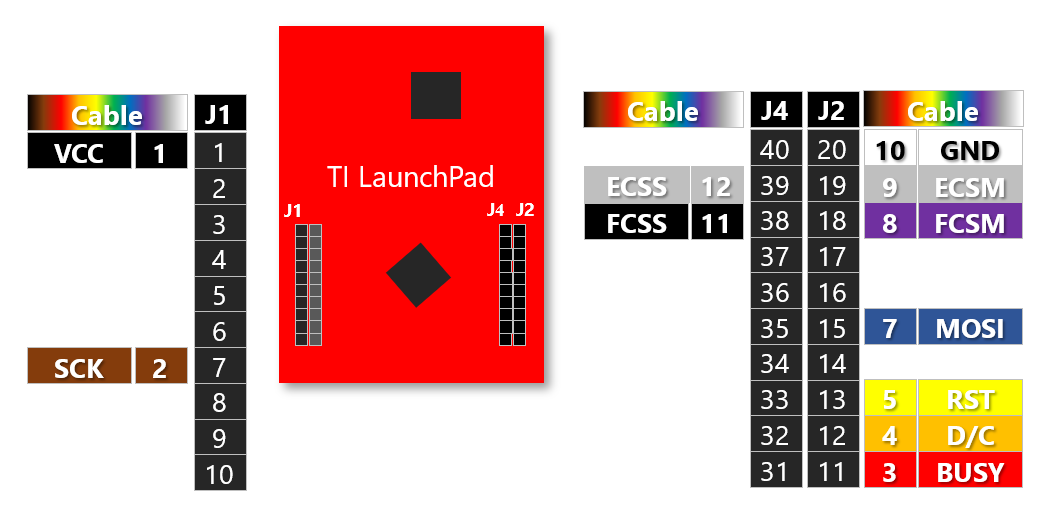
Connecting the EPD¶
Connecting EPD of sub 9.7” with the ZIF connector (J2):
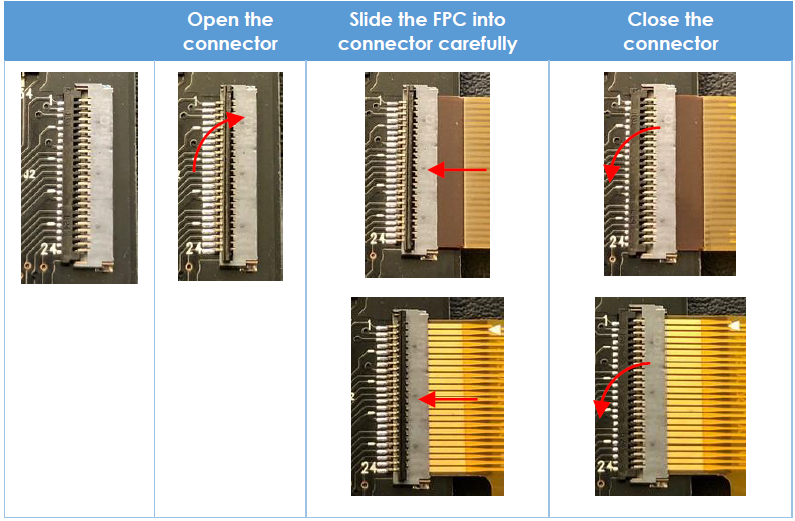
Connecting EPD of 9.7” or 12” with the ZIF connector (J1) via a 34-pins FFC to EXT3 Giant board:

Note that switching between large and other EPD sizes requires a shorting jumper. Leave it open when using EPDs smaller than 5”.
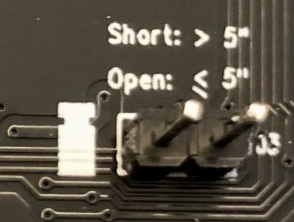
The final connection of EXT3-1 board with Raspberry Pi Pico and 2.66” EPD is like below for example.
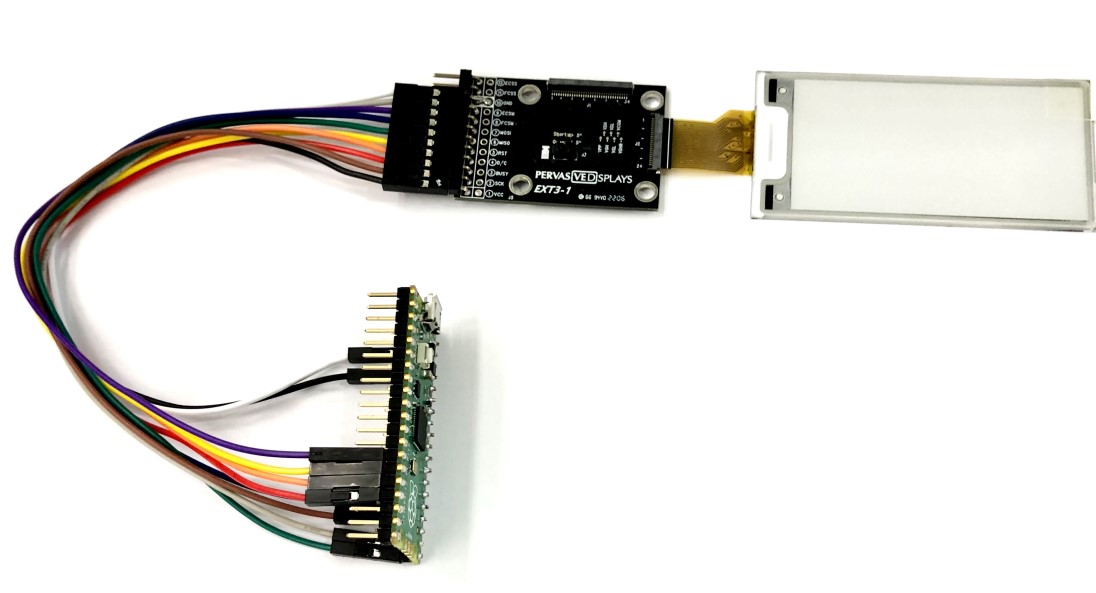
Working with EXT3-1¶
The driving source code can be used between Arduino and Energia, just the supported libraries of microcontroller kit are different. Arduino and Energia language are based on C/C++ where the file name extension is .ino file.
Check out Pervasive Displays Driver Library to discover our sample codes for many EPD sizes supported by the EXT3-1 kit!